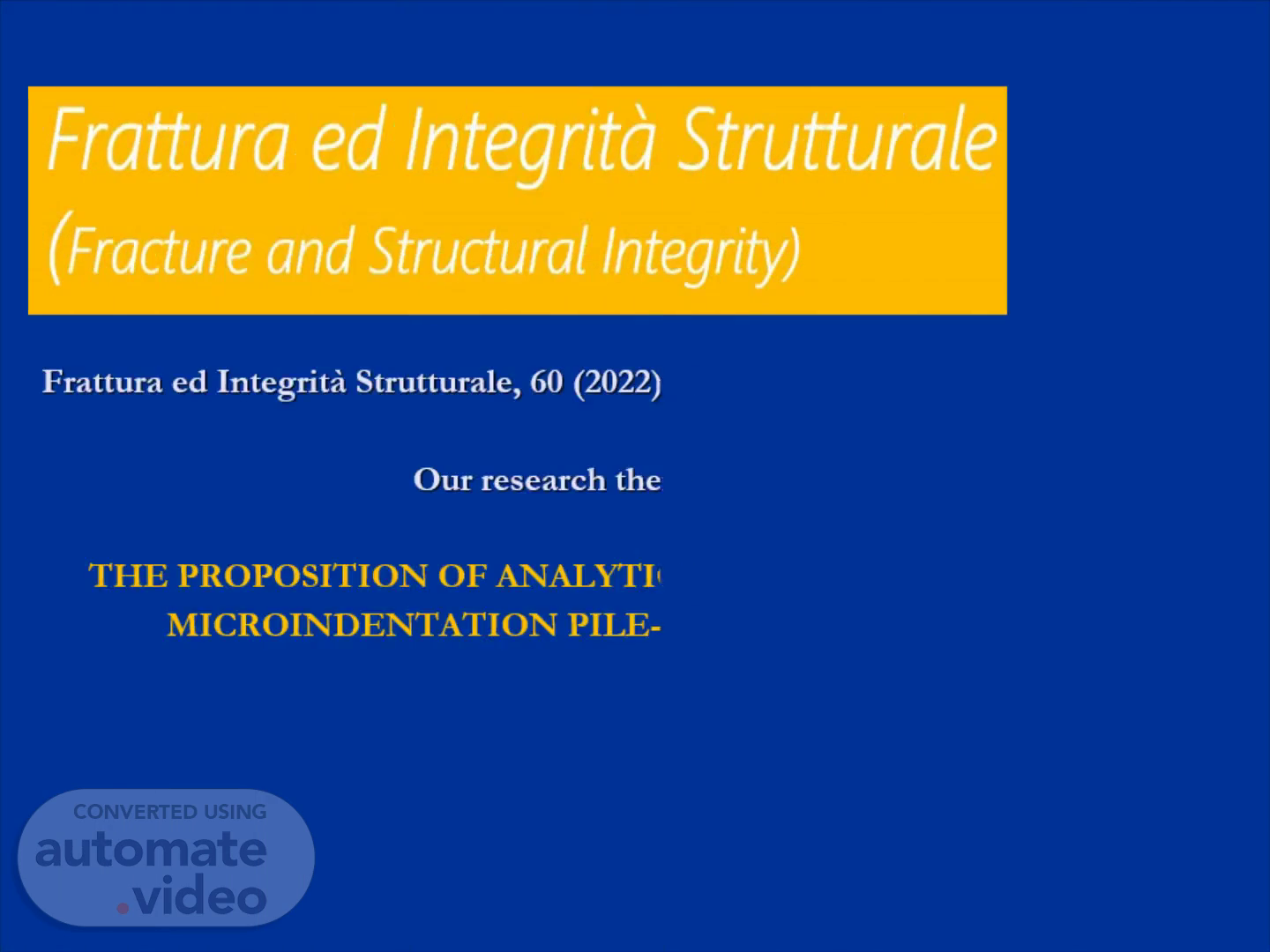
Page 1 (0s)
Frattura ed Integrità Strutturale, 60 ( 2022) 393-406; DOI: 10.3221/IGF-ESIS.60.27 Our research theme is entitled : THE PROPOSITION OF ANALYTICAL EXPRESSION H M –(√P/S) IN MICROINDENTATION PILE-UP DEFORMATION MODE.
Page 2 (18s)
THE PROBLÉMATIC. Additionally, the Classic Martens hardness is always calculated by multiplying the applied load by the maximum depth of indentation. This explains why this hardness is insensitive to the types of deformation under the indenter and is independent of them (sink-in or pile-up). In contrast to contact hardness (or instrumented hardness), which is proportional to the contact depth. As a result, this research is attempting to develop a semi-empirical method for determining Martens hardness that takes into account the plastic deformation of the material in pile-up mode..
Page 3 (36s)
SEMI-EMPIRICAL MODELING OF THE MECHANICAL RESPONSE BY INDENTATION.
Page 4 (54s)
RESULTS AND ANALYSIS. Figure 2: Characteristic curves of Cu99 at different indentation ultimate loadings..
Page 5 (1m 12s)
DETERMINATION OF THE DEFORMATION MODE. In our case study, the h f / h m ratio =0.95± 0.02, which shows that this ratio is greater than 0.83 (see details in the corresponding article [20]). Therefore, the predominant deformation mode of Cu99 is pile-up. This justifies the use of the expression proposed in this work..
Page 6 (1m 30s)
The linear regression shown in Fig. 5 shows a very good collocation of the points and a good mathematical correlation with a reproducibility rate of 99.98% which tends towards the ideal case with only 0.02% deviation. So, as can be seen, a good linear relationship exists between the two parameters examined (the hardness function and its mechanical response), being in good agreement with the analytical expression proposed in the equation. (18)..
Page 7 (1m 48s)
CONCLUSION. The results from microindentation tests on this examined ductile material show excellent agreement. We refined an analytical expression of Martens hardness derived from a previously developed P-h 2 expression relating to pile-up [7] as a function of the P 1/2 /S criterion used by Joslin and Oliver [13] for deformation in a mode pile-up in microindentation. Martens hardness does not take into account the deformation modes under an indenter (sink-in, pile-up) which is its weak point compared to contact hardness. However, the proposed expression is a tool for predicting the variable H M function as a function of the load, the stiffness, and the reduced modulus taking into consideration the pile-up strain mode..